Understanding Animal-Assisted Therapy for Autism Spectrum Disorder
Animal-assisted therapy (AAT) has evolved into a recognized complementary approach for supporting individuals with autism spectrum disorder (ASD). By integrating trained animals into therapeutic settings, AAT offers a multisensory environment that promotes emotional, social, and behavioral development. From its humble beginnings rooted in ancient practices to modern scientifically driven programs, AAT continues to grow as evidence accumulates regarding its potential benefits. This article explores the development, methodologies, benefits, and scientific support behind using animals as therapeutic partners in autism treatment.
Historical Development of Animal-Assisted Therapy in Autism
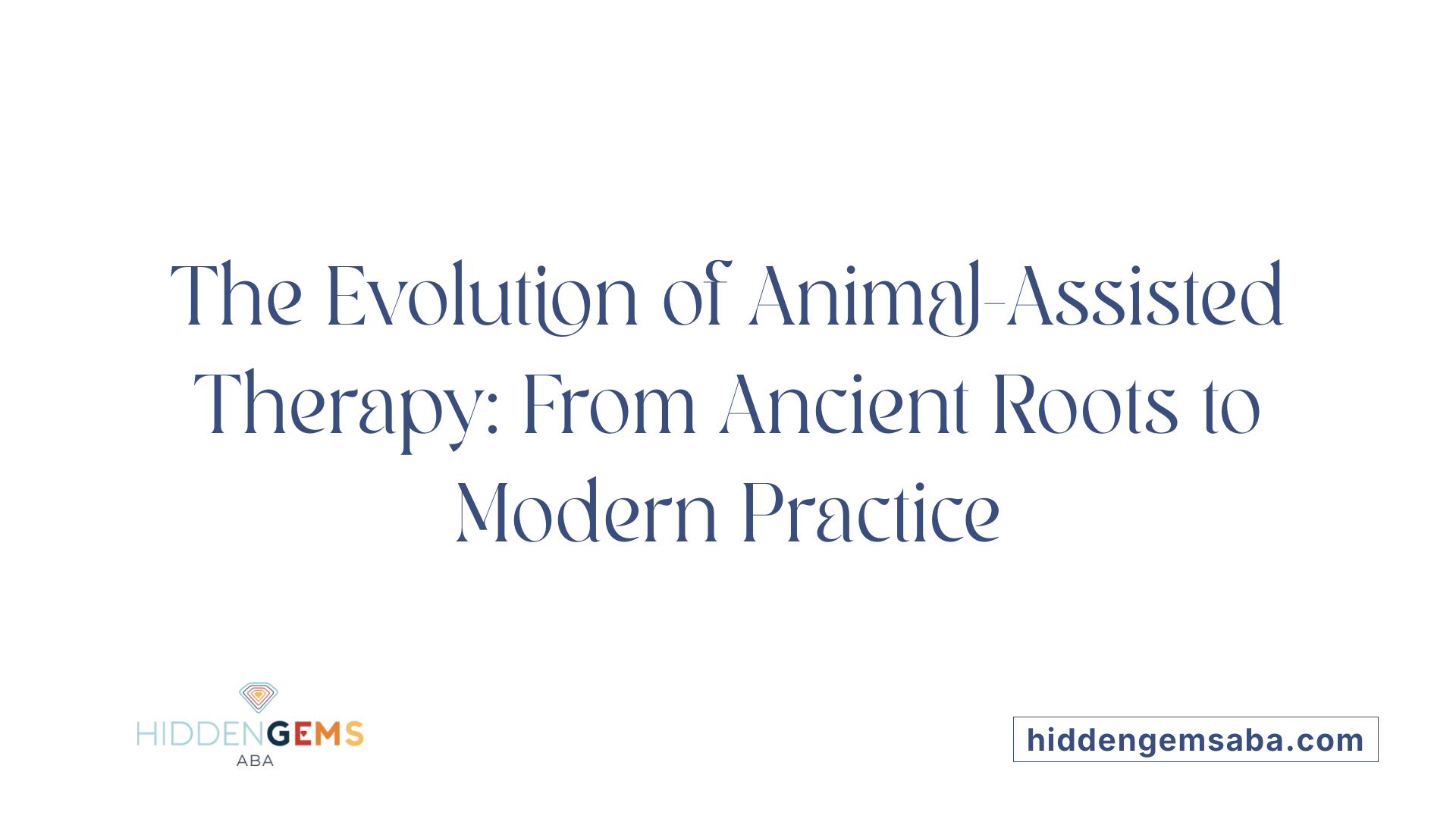
How has animal-assisted therapy developed historically in the treatment of autism?
Animal-assisted therapy (AAT) has a long-standing history that stretches back centuries. In ancient Greece and medieval Europe, animals like horses, small pets, and farm animals were used informally to provide comfort and support for individuals with various health and developmental challenges, including early efforts to aid those with autism.
The formal recognition of the therapeutic potential of animals gained momentum in the 19th and early 20th centuries, with influential figures such as Florence Nightingale recognizing the calming effects animals could have on patients. Sigmund Freud also acknowledged the soothing influence animals had in therapeutic settings.
A pivotal moment in the development of AAT for autism occurred in the 1960s when child psychologist Boris Levinson introduced the concept of pet therapy, advocating for structured interactions between children and animals as a means of promoting social and emotional skills. His pioneering work laid the groundwork for more systematic research into AAT.
Throughout the mid-20th century, organizations and researchers began to formalize animal-assisted interventions, conducting studies to understand their mechanisms and benefits better. The establishment of hospitals, clinics, and research institutions, such as the OHAIRE group at the University of Arizona, helped propel the field forward.
Initially, much of the evidence was anecdotal, but over time, scientific research increased in rigor, focusing on physiological and behavioral measures to evaluate impact. This shift has allowed AAT to move from anecdotal success stories to a more evidence-based practice.
Today, AAT encompasses diverse animal species—including dogs, horses, guinea pigs, and other farm animals—and a range of intervention models tailored to individual needs. The ongoing research continues to refine best practices, ensuring safe, effective, and humane therapy options for individuals with autism.
This evolution reflects a transition from informal use to a scientifically validated adjunct therapy that enhances traditional treatments, contributing positively to the social, emotional, and behavioral development of autistic individuals.
Animals Used in Autism-Related AAT and Their Selection
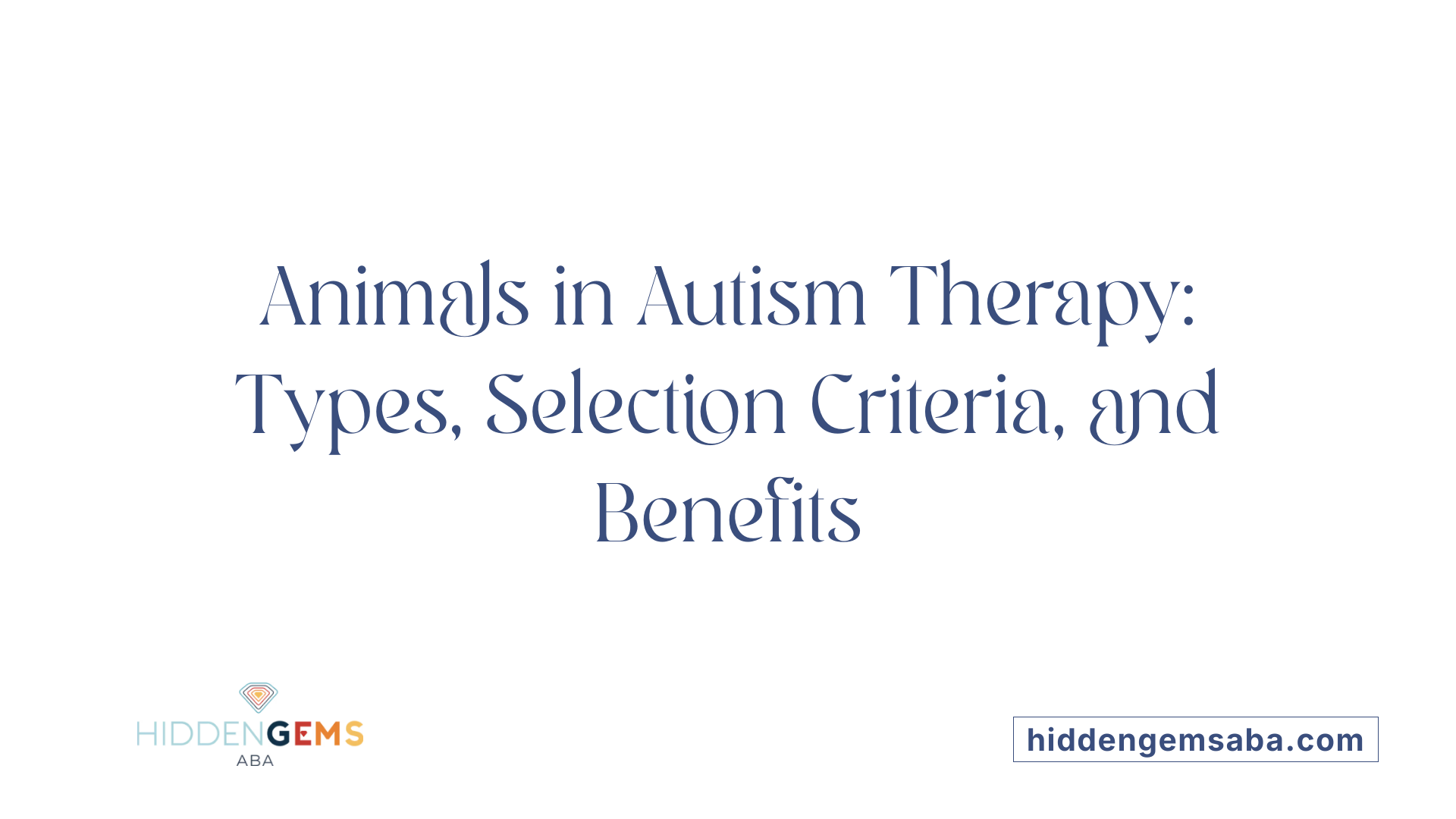
What types of animals are used in autism-related animal-assisted therapy?
Autism-related animal-assisted therapy (AAT) employs a variety of animals, primarily dogs and horses, but also includes cats, guinea pigs, and other farm or zoo animals. These animals are specifically chosen for their calming nature, support capacity, and ability to foster social and emotional development.
Dogs are the most common, especially therapy and service dogs, because they are highly trainable and provide affectionate, non-judgmental companionship. Therapy dogs have been shown to increase smiles, social interactions, and reduce physiological stress markers such as skin conductance in children with autism.
Horses are used in hippotherapy and equine-assisted therapy, which improve motor skills, emotional regulation, and social communication. These therapies leverage the movement and presence of horses to engage children in a multisensory experience that supports emotional and physical growth.
Guinea pigs have also demonstrated benefits; studies reveal increased social behaviors and contact in children when exposed to these small animals, making them excellent choices for classroom and home environments.
Farm animals and other zoo animals like pigs, llamas, and dolphins are less common but are utilized in specialized programs aiming to improve sensory processing, social motivation, and other core skills.
Criteria for animal selection: temperament, support capacity, calming influence
Selecting animals for autism therapy involves assessing their temperament, support capabilities, and calming influence on clients. Animals should be gentle, patient, and non-aggressive, with a calm demeanor that can help reduce anxiety for children.
Support capacity is critical; animals must be trainable to respond appropriately to the child's behaviors and cues, helping facilitate social interactions and emotional regulation.
The calming influence of animals—especially dogs and horses—can promote relaxation and focus, which are beneficial during therapeutic sessions. Safety is also paramount, so animals are selected based on their ability to stay calm in unpredictable environments and their suitability for interactions with children who may have sensory sensitivities.
Studies on therapy dogs and guinea pigs show social and physiological benefits
Research indicates that interactions with therapy dogs and guinea pigs can notably improve social engagement, including increased eye contact, talking, and gestures.
Physiologically, such interactions can decrease stress indicators and promote emotional wellbeing. For example, children engaging with guinea pigs showed increased smiling and social contact, along with decreased arousal levels measured through skin conductance.
Hippotherapy and equine-assisted therapy for motor and emotional skills
Hippotherapy and equine-assisted activities are specialized therapies that utilize horses to support children with autism in developing motor and emotional skills.
These therapies help improve balance, coordination, and muscle tone, while also aiding in emotional regulation and social interaction. They are particularly effective in providing a multisensory environment that encourages calmness and focus.
Factors influencing animal choice: safety, individual needs, therapy goals
Choosing the right animal for autism therapy depends on safety considerations, individual client needs, and specific therapy goals. For children susceptible to sensory overload or aggression, animals with gentle temperaments are prioritized.
The goal of therapy—whether to improve communication, motor skills, emotional regulation, or social interaction—guides the choice of animal. For example, horses might be preferred for motor skill development, while dogs are often chosen for social and emotional support.
Ultimately, the selection process aims to ensure the safety of both the client and the animal while maximizing the therapeutic benefits.
Benefits of Animal-Assisted Therapy for Autism Spectrum Disorder
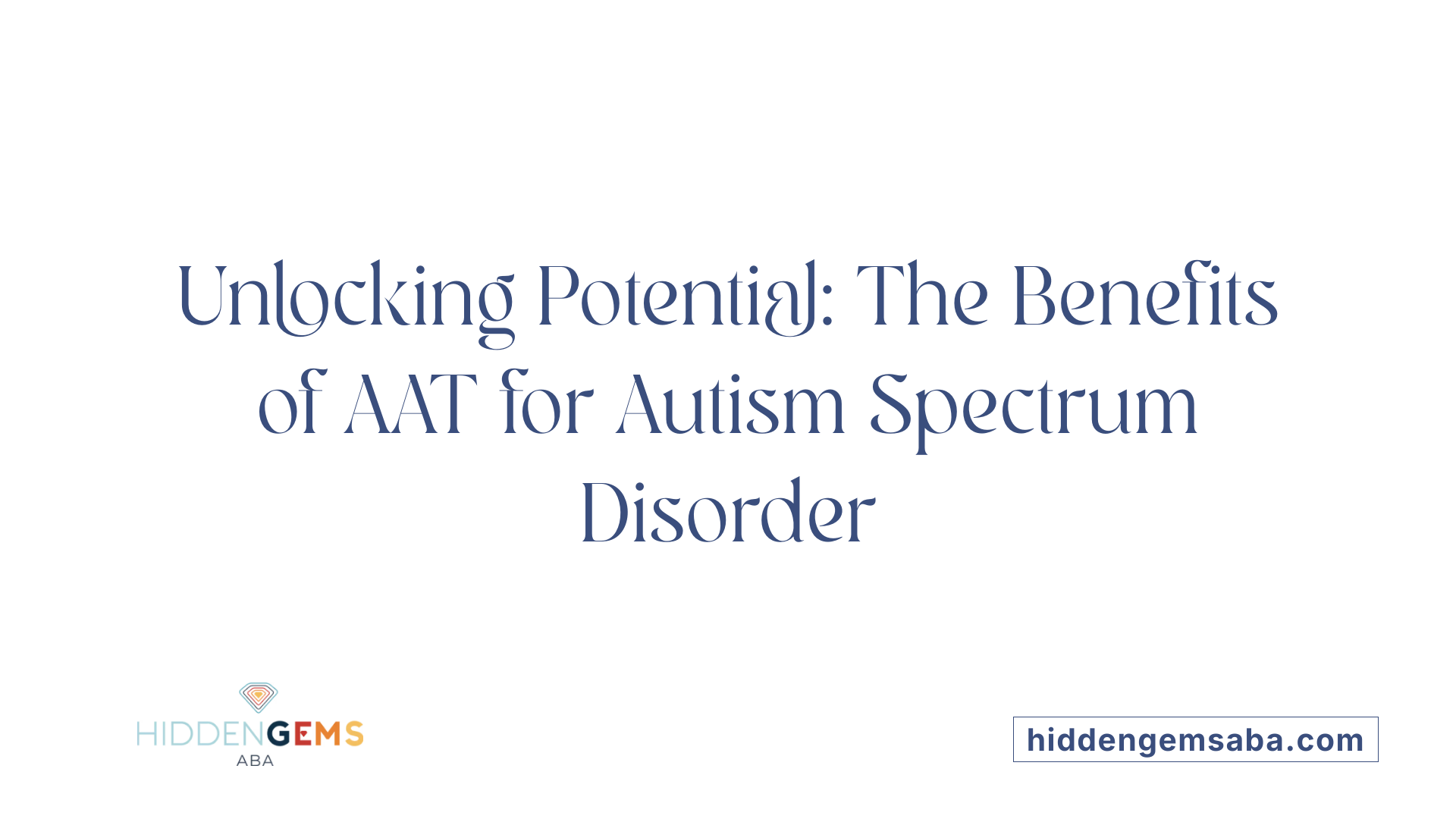
What are the benefits of animal-assisted therapy for autism spectrum disorder?
Animal-assisted therapy (AAT) provides a variety of positive effects for individuals with autism spectrum disorder (ASD). It is designed to improve social skills, communication, and emotional regulation through interactions with animals, often serving as nonjudgmental companions that help foster trust and comfort.
One of the main advantages of AAT is its multisensory nature. Engaging with animals such as dogs, horses, or guinea pigs creates calming sensory experiences. These interactions can help reduce anxiety, decrease hyperactivity, and promote relaxation, which are common challenges faced by many autistic individuals.
Furthermore, AAT assists in building emotional bonds and encouraging empathy. Children and adults often develop increased self-confidence and acceptance through pet interactions. The therapy supports emotional regulation and can teach skills like sharing and cooperation in a natural, supportive environment.
Research shows that AAT may also contribute to reductions in specific core ASD symptoms, including irritability and social communication difficulties. For example, engaging with therapy dogs can motivate speech, gestures, and eye contact, facilitating social engagement.
Moreover, by tailoring activities to each person's preferences and needs, AAT can effectively support behavioral improvements. It has the potential to enhance overall well-being, making it a valuable complement to traditional therapies like occupational and behavioral therapy.
While more high-quality studies are needed, current evidence underscores that regular animal interactions can play a significant role in supporting emotional and social development for autistic individuals. Integrating animals into therapy sessions offers not only therapeutic benefits but also joy and motivation, helping improve quality of life.
Suitability of AAT for Children and Adolescents with Autism
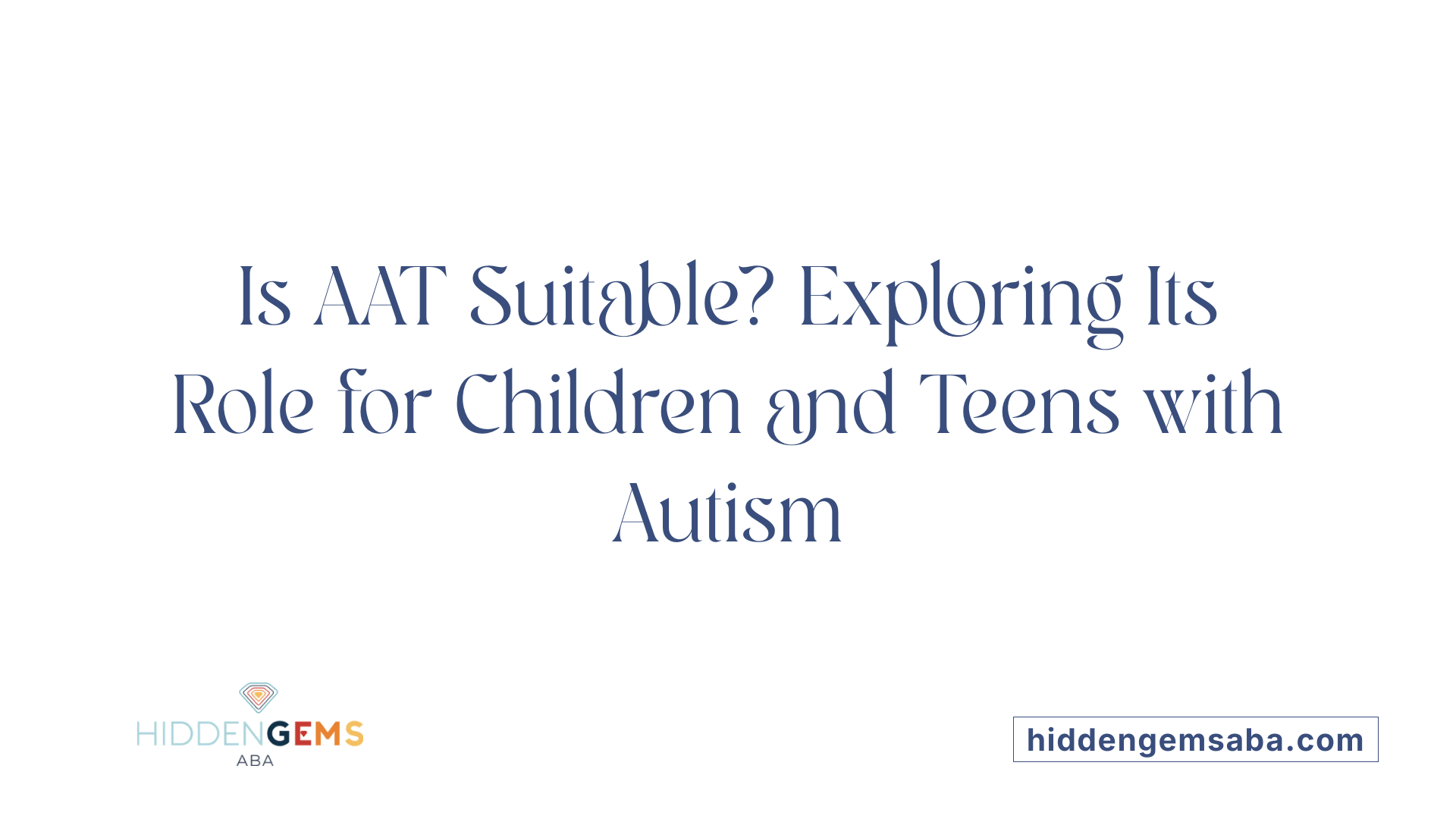
Is animal-assisted therapy suitable for children and adolescents with autism?
Animal-assisted therapy (AAT) shows promise as a supportive approach for young individuals on the autism spectrum. Its benefits include enhancing social skills, communication, emotional regulation, and reducing stress and hyperactivity. By working with animals such as dogs and horses, children often experience improved engagement, calmness, and a sense of security. These animals act as social catalysts, encouraging children to interact more openly and positively.
However, researchers point out that current evidence is limited. Many studies face challenges like small sample sizes, inconsistent intervention protocols, and lack of standardized procedures. This heterogeneity makes it difficult to compare results or confirm long-term benefits conclusively.
Despite these limitations, AAT can be highly effective when tailored to each child's individual needs. It is essential that trained professionals oversee the therapy to ensure safety and maximize positive outcomes. When integrated thoughtfully into broader treatment plans, animal-assisted therapy can be a valuable addition, supporting children in developing greater social understanding, emotional skills, and independence.
In summary, AAT is suitable for children and adolescents with autism when personalized, carefully planned, and administered by qualified practitioners. While promising, continued rigorous research will help establish clearer guidelines and confirm its effectiveness over time.
Application and Efficacy of AAT in Autism: Practical Approaches and Evidence
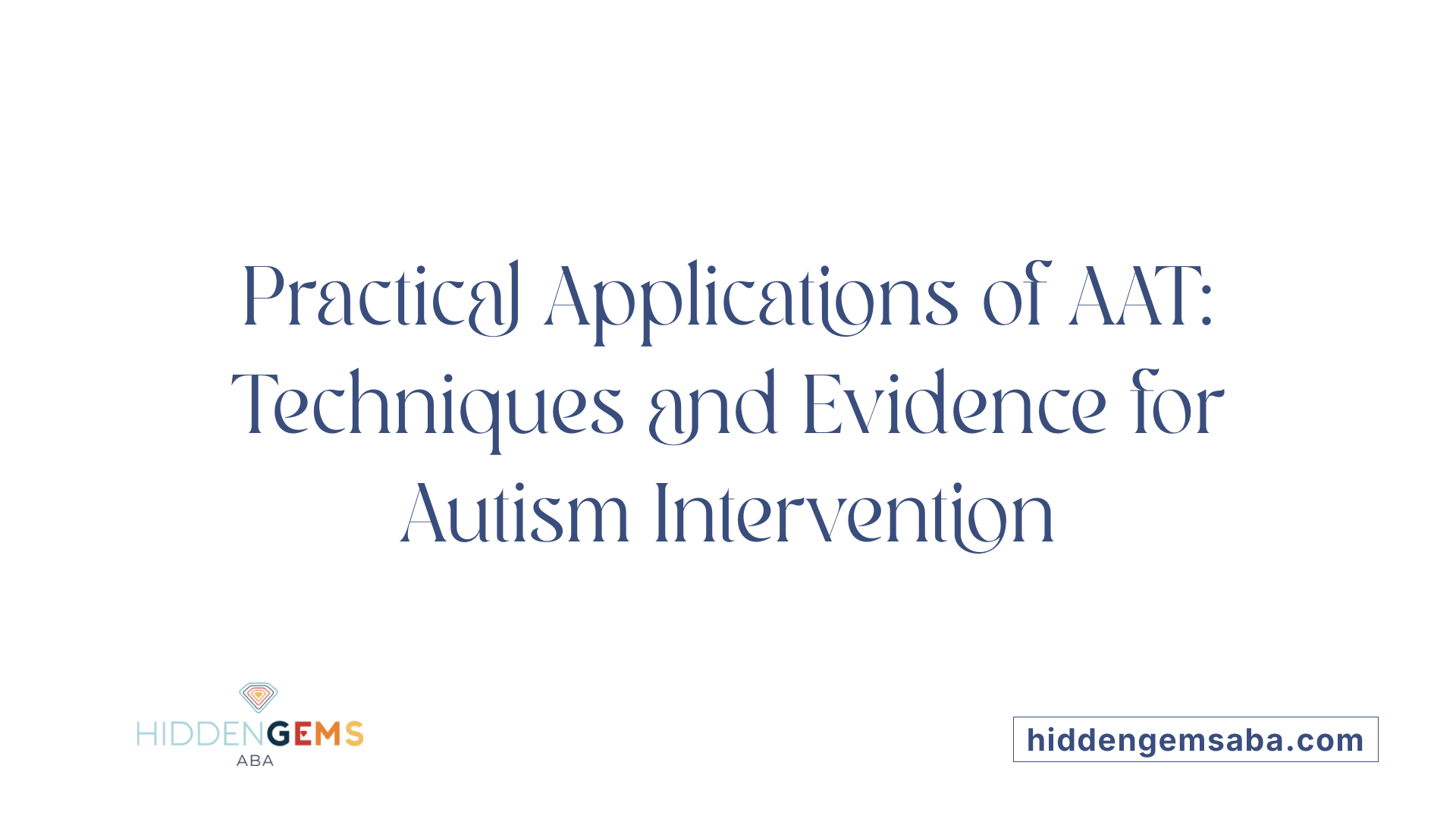
What are the specific applications of animal-assisted therapy in autism?
Animal-assisted therapy (AAT) is increasingly recognized as a valuable complementary approach for individuals with autism spectrum disorder (ASD). Its primary aim is to enhance social skills, emotional regulation, and overall well-being. In practical settings, AAT focuses on fostering sharing, cooperation, and attention by involving animals such as dogs, horses, guinea pigs, or other species during structured sessions.
These sessions are designed with specific goals in mind. They often include activities that promote communication, social interaction, and emotional expression. For example, interaction with therapy dogs can encourage children to talk, make eye contact, or practice gestures, which can translate to improved social skills outside the therapy environment.
AAT leverages multisensory experiences, providing tactile engagement through petting or grooming animals. Such sensory input may help reduce sensory overload, meltdowns, and hyperactivity—common challenges in ASD. For example, gentle stroking of a guinea pig can encourage calmness and focus.
Emotional benefits are also emphasized. Interactions with animals can increase feelings of affection, acceptance, and trust, bolstering self-confidence and reducing feelings of loneliness. Children and adolescents may develop better emotional regulation skills through consistent, positive experiences with animals.
Specific modalities, such as hippotherapy (using the movement of horses), have shown promise in improving motor coordination, calming hyperactivity, and enhancing social cognition. Therapy dogs are used to facilitate social interactions and build communication skills, while interactions with small animals like guinea pigs in classroom settings have been linked to increased smiling, social contact, and positive social behaviors.
Despite these benefits, it is essential to approach AAT with careful assessment, ensuring safety and appropriateness for each individual. Risks such as animals triggering autistic traits or overwhelming clients can be mitigated through tailored interventions, professional oversight, and thorough planning.
In summary, AAT offers a versatile set of applications aimed at improving core and associated symptoms of autism by harnessing the calming, engaging, and social potential of animals. When appropriately designed and executed, it serves as a meaningful addition to comprehensive autism therapies.
Scientific Evidence and Future Directions in AAT for Autism
Research outcomes for animal-assisted therapy (AAT) in autism show promising but mixed results. A comprehensive review of 45 studies involving 1,212 participants revealed notable improvements in key areas such as social communication, irritability, hyperactivity, and language ability. Specifically, the meta-analysis indicated that children with autism benefited from increased social interaction and reduced behavioral challenges following participation in AAT programs.
However, not all social domains showed significant improvements. Measures of social awareness, cognition, mannerisms, motivation, lethargy, and stereotypical behaviors often remained unchanged. These mixed findings underscore the complexity of evaluating AAT’s true effectiveness.
Most research utilizes various models, including therapy dogs, horses, guinea pigs, and other animals, tailored through assessments and individualized plans. Despite these efforts, methodological limitations frequently hamper definitive conclusions. Many studies face issues such as small sample sizes, high risk of bias, and variability in intervention protocols, which impede the ability to replicate findings reliably.
Recognizing these challenges, the field calls for more rigorous research designs—large-scale randomized controlled trials with standardized procedures and long-term follow-ups. Only through such high-quality studies can the true potential and limitations of AAT in autism be accurately determined.
In summary, existing evidence suggests AAT can positively influence behavior and emotional well-being in autistic individuals. Nevertheless, without stronger scientific validation, clinicians and policymakers must interpret these findings cautiously. Continued research, emphasizing methodological rigor, is essential to establish clear, evidence-based guidelines for utilizing animal-assisted therapy as a mainstream treatment option for autism.
Concluding Perspectives on AAT and Autism
While the current body of research underscores the promising potential of animal-assisted therapy for supporting autistic individuals, it also highlights significant challenges related to methodological inconsistencies and limited high-quality evidence. The calming, social, and emotional benefits demonstrated by various studies suggest that AAT can serve as a valuable adjunct in comprehensive autism care. Continued research, standardized protocols, and trained practitioners are essential to fully harness its benefits, ensure animal welfare, and establish best practices. As awareness grows, AAT has the capacity to complement traditional therapies, foster emotional growth, and improve quality of life for many with autism.
References
- An Evaluation of Animal-Assisted Therapy for Autism Spectrum ...
- Animal-Assisted Intervention for Autism
- What Do We Really Know about Animal Interventions for Autism?
- The effectiveness of animal-assisted therapy for children and ...
- Effectiveness of animal-assisted activities and therapies for autism ...
- Animal-assisted therapy: autistic children | Raising Children Network
- Autism Spectrum Disorder | Child Health & Development | HABRI
- Animal-assisted therapy - Wikipedia





